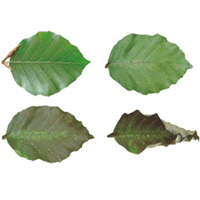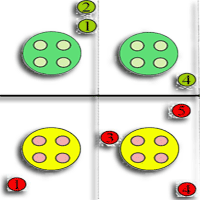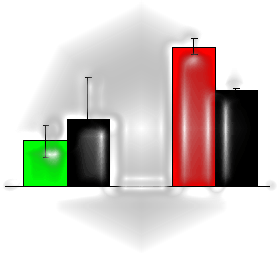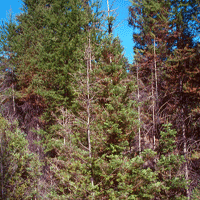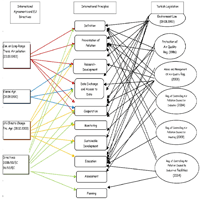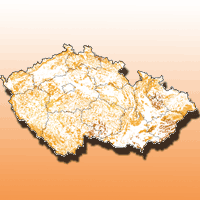
Ambient ozone phytotoxic potential over the Czech forests as assessed by AOT40
iForest - Biogeosciences and Forestry, Volume 5, Issue 3, Pages 153-162 (2012)
doi: https://doi.org/10.3832/ifor0617-005
Published: Jun 25, 2012 - Copyright © 2012 SISEF
Research Articles
Abstract
Ambient ozone (O3) represents one of the most prominent air pollution problems in Europe. We present an analysis on O3 with respect to its phytotoxic potential over Czech forests between 1994 and 2008. The phytotoxic potential is estimated based on the exposure index AOT40 for forests calculated from real-time monitoring data at 24 rural sites. Our results indicate high phytotoxic potential for most of the Czech Republic (CR) with considerable inter-annual and spatial variability. The highest AOT40 values were 38-39 ppm·h. The critical level for forest protection (5 ppm·h) was usually exceeded early in the growing season, generally in May. In years with meteorological conditions conducive to ozone formation, the critical level was exceeded by 5-7 folds as compared to years with non-conducive conditions; nevertheless, all sites consistently exceeded the critical level since 1994. In the extremely hot and dry year 2003, the critical level for forests was exceeded over 31 % of the Czech forested area. More research is needed to translate these exceedances into forest injury in the CR.
Keywords
Authors’ Info
Authors’ address
M Schreiberová
Czech Hydrometeorological Institute, Na Šabatce 17, 143 06 Prague 4 - Komorany (Czech Republic)
Corresponding author
Paper Info
Citation
Hunová I, Schreiberová M (2012). Ambient ozone phytotoxic potential over the Czech forests as assessed by AOT40. iForest 5: 153-162. - doi: 10.3832/ifor0617-005
Academic Editor
Elena Paoletti
Paper history
Received: Nov 29, 2011
Accepted: May 11, 2012
First online: Jun 25, 2012
Publication Date: Jun 29, 2012
Publication Time: 1.50 months
Copyright Information
© SISEF - The Italian Society of Silviculture and Forest Ecology 2012
Open Access
This article is distributed under the terms of the Creative Commons Attribution-Non Commercial 4.0 International (https://creativecommons.org/licenses/by-nc/4.0/), which permits unrestricted use, distribution, and reproduction in any medium, provided you give appropriate credit to the original author(s) and the source, provide a link to the Creative Commons license, and indicate if changes were made.
Web Metrics
Breakdown by View Type
Article Usage
Total Article Views: 56638
(from publication date up to now)
Breakdown by View Type
HTML Page Views: 47187
Abstract Page Views: 3632
PDF Downloads: 4056
Citation/Reference Downloads: 28
XML Downloads: 1735
Web Metrics
Days since publication: 4938
Overall contacts: 56638
Avg. contacts per week: 80.29
Citation Metrics
Article Citations
Article citations are based on data periodically collected from the Clarivate Web of Science web site
(last update: Mar 2025)
Total number of cites (since 2012): 20
Average cites per year: 1.43
Publication Metrics
by Dimensions ©
Articles citing this article
List of the papers citing this article based on CrossRef Cited-by.
References
Forest condition monitoring in the Czech Republic. Forestry and Game Research Institute, Strnady, Czech Republic, pp. 157.
Gscholar
Council Decision 97/101/EC of 27 January 1997 establishing a reciprocal exchange of information and data from networks and individual stations measuring ambient air pollution within the Member States. Official Journal of the European Communities, No. L 35/14, Brussels, Belgium.
Gscholar
Directive 2008/50/EC of the European Parliament and of the Council of 21 May 2008 on ambient air quality and cleaner air for Europe. OJEC L 152, Brussels, Belgium.
Gscholar
Validation of ozone symptoms on leaves from the Jizerske hory Mts. Ozone Validation Centre for Central Europe, WSL, Birmensdorf, Switzerland, pp. 12.
Gscholar
An Introduction to applied geostatistics. Oxford University Press Inc., Oxford, UK, pp. 561.
Gscholar
Ozone-climate interactions. Air pollution research report No. 81. EC, Brussels, Belgium, pp. 143.
Gscholar
Using ArcGIS geostatistical analyst. Environmental Systems Research Institute, Redlands, USA, pp. 300.
Gscholar
Visible foliar injury as a tool for the assessment of surface ozone impact on native vegetation: a case study from the Jizerské hory Mts. Journal of Forest Science 56: 177-182.
Gscholar
Forests under climate change and air pollution: Gaps in understanding and future directions for research. Environmental Pollution 160: 57-65.
CrossRef | Gscholar
Air pollution in the Czech Republic in 2010. CHMI, Prague, Czech Republic, pp. 268.
Gscholar
Advances of air pollution science: From forest decline to multiple-stress effects on forest ecosystem services. Environmental Pollution 158: 1986-1989.
CrossRef | Gscholar
Tropospheric ozone: a continuing threat to global forests? In: “Air Pollution, Global Change and Forests in the New Millenium” (Karnosky DF, Percy KE, Chappelka AH, Simpson C, Pikkarainen J eds). Elsevier, Amsterdam, The Netherlands, pp. 85-118.
Gscholar
Atmospheric chemistry and physics. John Wiley, New York, USA, pp. 1326.
Gscholar
Atmospheric ozone: a millenium issue. EGU Special Publication Series 1, Copernicus, Berlin, Germany, pp. 147.
Gscholar
Monitoring of ozone risk for forest in the Czech Republic: preliminary results. Scientific World Journal 7: 78-83.
Gscholar
Climate atlas of Czechia. Ceský hydrometeorologický ústav, Univerzita Palackého, Praha, Czech Republic, pp. 255.
Gscholar


